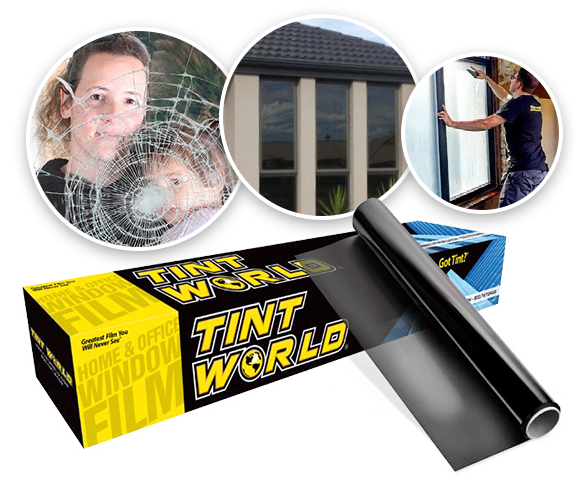Car Window Tinting for Improved Protection and Reduced Break-Ins
Wiki Article
Window Tinting Laws and Guidelines: What You Need to Know Prior To Tinting Your Automobile
Prior to proceeding with window tinting for your automobile, it is vital to familiarize yourself with the diverse legislations and standards that control this technique throughout different states. These laws dictate the acceptable levels of tint darkness, frequently determined by visible light transmission (VLT) portions, and include certain stipulations for front windscreens aimed at making certain roadway security. Additionally, specific jurisdictions might provide medical exceptions for individuals with qualifying conditions. Recognizing these complexities can conserve you from potential legal ramifications, however what are the specific guidelines in your state?Introduction of Home Window Tinting Rules
Home window tinting legislations are often based on variation across different jurisdictions, mirroring local laws and safety factors to consider. These legislations dictate the permitted levels of tint darkness and reflectiveness on lorry home windows, guaranteeing that vehicle drivers maintain ample exposure while likewise protecting against harmful UV rays and warmth.The majority of policies classify window tinting based upon the Visible Light Transmission (VLT) percent, which shows the quantity of light that can go through the home window. Normally, lower VLT portions symbolize darker colors. Legislations frequently differentiate between the front, side, and rear home windows, with stricter limitations related to the front windshield to improve safety for both the chauffeur and various other roadway users.
Additionally, some jurisdictions enforce restrictions on the reflectivity of the tint, preventing excessive glare that could hinder presence. Exemptions to these laws might exist for people with specific clinical problems requiring extra sun security. Conformity with home window tinting laws is essential, as offenses can lead to penalties, obligatory elimination of the tint, and possible boosts in insurance policy premiums. Therefore, it is essential for automobile owners to familiarize themselves with neighborhood regulations prior to proceeding with home window tinting installments.
State-by-State Color Rules
Understanding the certain window tinting regulations in each state is crucial for lorry owners looking for to conform with the regulation. Each state in the U.S. has established its own collection of policies controling home window tinting, which can differ considerably. These laws often determine the allowed levels of tint darkness, the types of windows that can be tinted, and any type of medical exemptions that may apply.For instance, states like California have strict restrictions on color darkness for front windows, while others, such as New Mexico, may permit darker tints. Additionally, certain states mandate details exposure percentages for different windows, including the windshield, front side windows, and rear windows. It is critical for cars and truck proprietors to acquaint themselves with their state's laws to avoid prospective fines or charges.
Additionally, some states may call for a certification sticker to be positioned on tinted windows, showing compliance with state regulations. Failing to stick to these policies not just risks legal consequences yet can additionally impact safety and exposure while driving. Automobile proprietors must conduct extensive research study or seek advice from neighborhood authorities to make certain complete understanding and compliance with state-by-state tint policies.
Allowed Tint Types and levels
Lots of vehicle proprietors may be shocked to find out that allowed color degrees and types vary extensively across different states. Each state has actually developed its own laws regarding the permissible darkness and reflectivity of home window color, usually determined by Visible Light Transmission (VLT) percentages. VLT describes the amount of light that can travel through the colored home windows; thus, a reduced portion shows a darker tint.
check my source Furthermore, the kinds of tint products enabled can differ, with some states forbiding metallic or mirror-like surfaces. It is important for vehicle proprietors to acquaint themselves with their state's specific laws to make certain conformity. Non-compliance can cause penalties, compulsory removal of the tint, or various other legal repercussions, making it necessary to comprehend these policies prior to continuing with installment.
Medical Exceptions for Tinting
While not all states offer allowances for medical exemptions concerning home window tinting, those that do acknowledge the need for details people to enhance visibility and convenience because of clinical problems. Numerous medical conditions, such as lupus, click here for more skin cancer cells, and particular eye disorders, can make individuals especially sensitive to sunlight. Consequently, these individuals may need darker colors to safeguard themselves from dangerous UV rays and glare.
It is important to keep in mind that even with a medical exception, there might still be constraints on the degree of tint enabled. Compliance with state legislations ensures that people are both safeguarded and within lawful restrictions. Those thinking about medical exceptions ought to contact their neighborhood Department of Motor Automobiles or equivalent authority to comprehend the requirements and treatments needed to get an exemption efficiently.
Charges for Non-Compliance
Stopping working to abide by window tinting laws can result in significant fines, which differ by state. Police are encouraged to issue citations for cars that do not abide by the specified tinting regulations. These fines commonly include penalties, which can range from small quantities to several hundred dollars, relying on the seriousness of the violation and the state in concern.In some territories, repeated offenses may lead to escalating fines or added charges, such as mandatory court looks. Non-compliance might demand the elimination of illegal tinting, usually at the proprietor's cost. In severe situations, habitual offenders might encounter suspension of their automobile enrollment up until compliance is accomplished.
In addition, insurance policy effects may develop from getting several citations for window tint offenses. Insurance providers might view such offenses as a click this link sign of riskier behavior, possibly causing boosted premiums or difficulty in insurance coverage.
To prevent these fines, it is crucial for car proprietors to acquaint themselves with their neighborhood home window tinting laws and make certain that their car complies (Window Tinting). This proactive strategy not just avoids lawful implications yet also advertises roadway security
Final Thought

The majority of laws identify window tinting based on the Visible Light Transmission (VLT) portion, which shows the quantity of light that can pass with the home window. Conformity with window tinting regulations is vital, as offenses can result in penalties, obligatory removal of the tint, and prospective boosts in insurance policy costs.Comprehending the details window tinting guidelines in each state is important for automobile proprietors looking for to conform with the regulation. These policies commonly determine the allowed levels of color darkness, the kinds of home windows that can be tinted, and any clinical exceptions that might apply.
For circumstances, states like The golden state have rigid limitations on color darkness for front home windows, while others, such as New Mexico, may enable darker tints.
Report this wiki page